Grocery Guides
9 Types of Sushi Explained: Nigiri, Temari, Inari & More
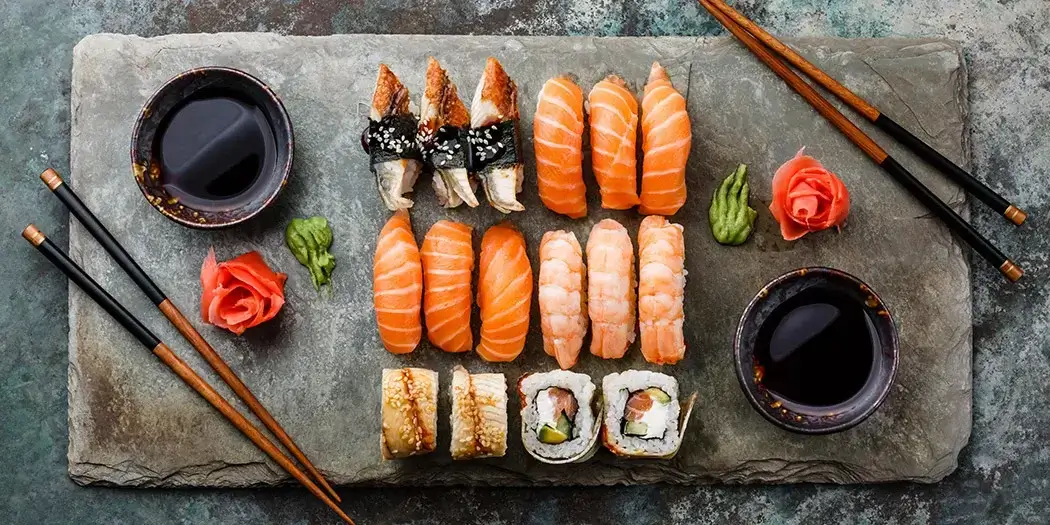
Sushi is a Japanese staple, prepared with vinegared rice, veggies and raw seafood, that has become a global sensation. Despite its popularity, diving into the world of sushi can be intimidating. Many folks tend to stick to their usual favorites, hesitant to open their palates and explore various types of sushi.
Below, we’ll break down the differences between nine common types of sushi and shed light on what makes them so beloved so you can identify popular sushi types and maybe even try your hand at homemade rolls.

1. Sashimi
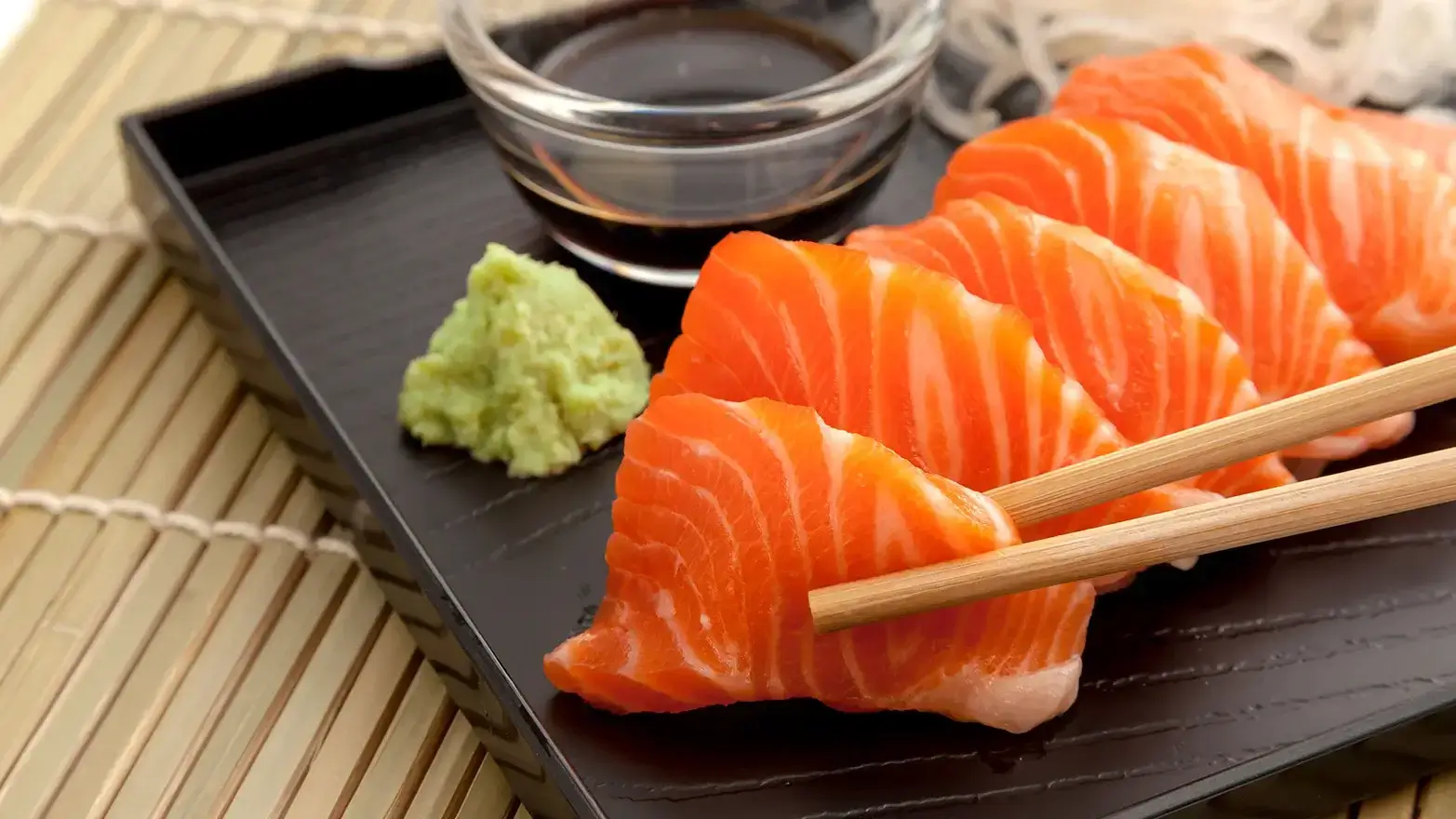
Category: hand-sliced
Sashimi is raw fish cut into thin slices and eaten by itself. Preparing sashimi is considered an art form because it requires extreme skill and precision to slice the perfect “melt-in-your-mouth” pieces It often requires the expertise of a sushi chef.
When eating sashimi, it’s recommended to first try it on its own without any sauce to appreciate the rich and fresh taste of the fish. Each type of sashimi brings unique qualities to the table, allowing you to experience authentic flavor with each bite. Sashimi is typically served with wasabi, pickled ginger, soy sauce or daikon radish to enhance the fish’s natural flavors.
Sashimi can be made from different types of thinly sliced raw seafood, including:
- Sake (salmon) sashimi
- Ebi (shrimp) sashimi
- Ahi (tuna) sashimi
- Unagi (freshwater eel) sashimi
- Hamachi (yellowtail) sashimi
- Uni (sea urchin) sashimi
- Tako (octopus) sashimi
- Ika (squid) sashimi
Sashimi vs. sushi
Sushi is made with raw seafood but is prepared with vinegar rice and sometimes other cooked elements like tempura or egg. Sashimi is premium raw seafood without rice or cooked fillings, so it technically isn’t considered sushi.
2. Nigiri (nigirizushi)
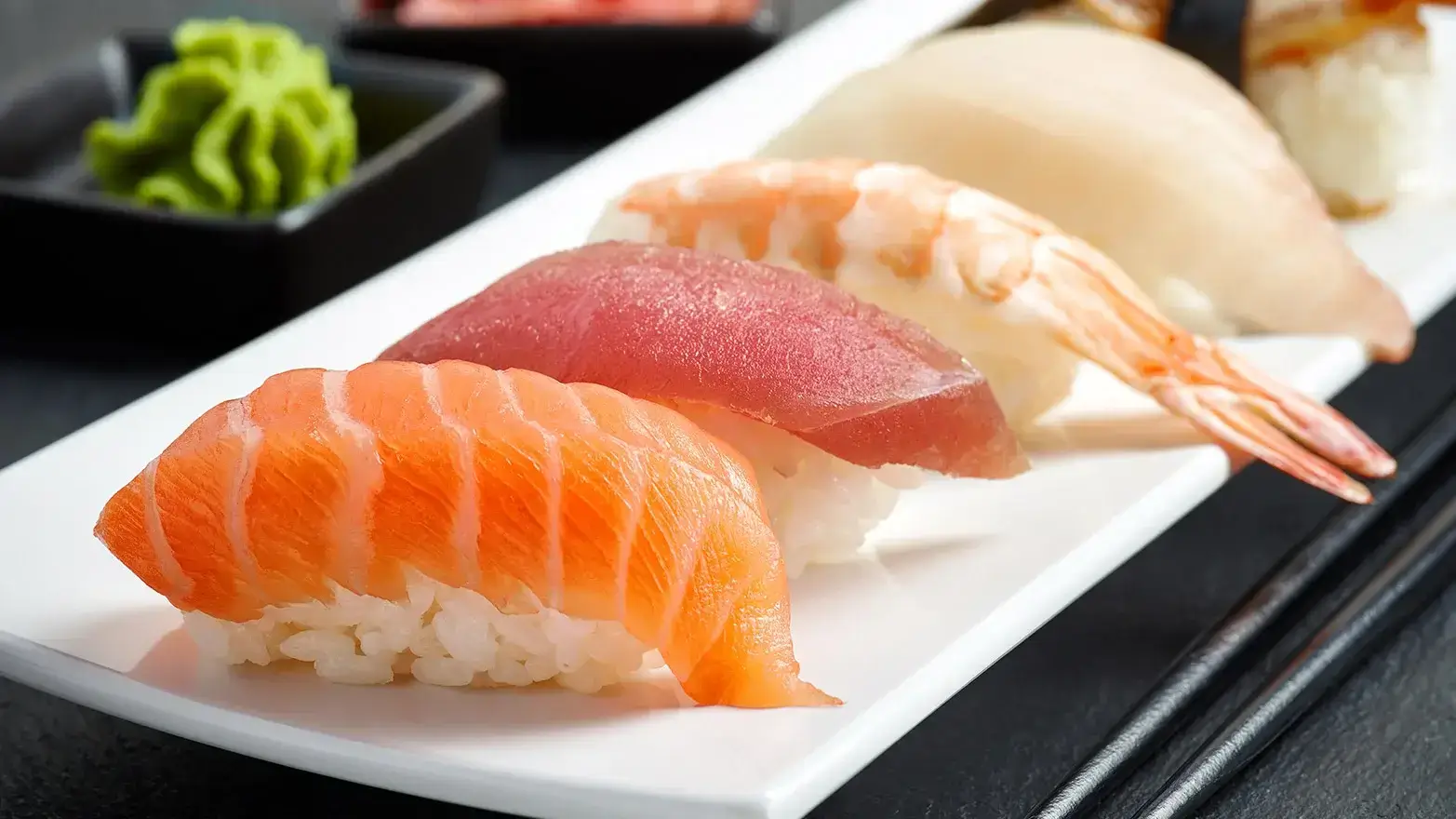
Category: hand-pressed
Nigiri sushi, often called nigirizushi, is sliced fish on rice. Nigiri is made by hand-pressing small mounds of vinegar rice, adding a touch of wasabi and topping it with raw seafood. To get the most out of nigiri, avoid over-seasoning the rice or adding excessive soy sauce. Whether you’re trying it at a restaurant or making it at home, nigiri requires the perfect ratio of rice to fish to allow the freshness and flavors to shine.
All nigiri has a base of hand-pressed vinegar rice but can be topped with different types of seafood. Here are some popular types:
- Ebi (shrimp) nigiri
- Tamago (egg) nigiri
- Unagi (eel) nigiri
- Sake (salmon) nigiri
- Hotate (scallops) nigiri
- Maguro (tuna) nigiri
Nigiri is ideal if you like a balance of rice and seafood with a hint of wasabi. It’s a classic choice that highlights the sushi chef’s ability to create simple yet flavorful bites.
Nigiri vs. sushi
Sushi is a general name for any mix of sticky rice, raw seafood, and veggies; nigiri is a specific type of sushi where sushi chefs hand-press rice and top it with seafood.
3. Hako (hakozushi)
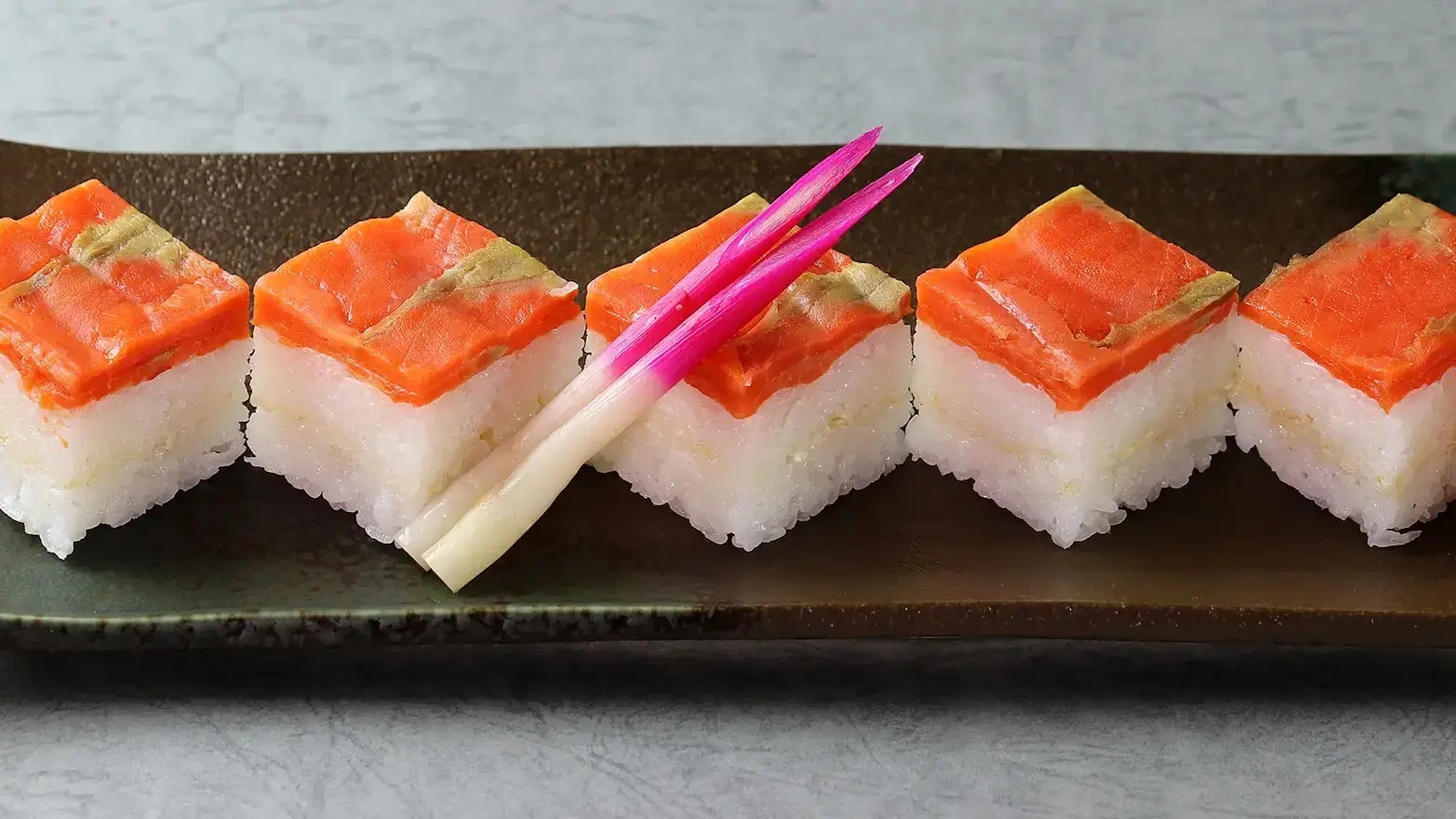
Category: hand-pressed
Hako sushi is made by placing rice and other sushi ingredients in a small square wooden box known as an Oshibako and pressing it down to create uniform sushi bites. Hako is commonly made with sashimi, vegetables or tempura.
Another layer of rice on top seals the ingredients into a neat, compact block. The pressing technique keeps the sushi pieces uniform and improves the taste by fusing the flavors together. If you don’t have a box, you can use household items like square Tupperware to pack the ingredients and cut them into little squares.
If you enjoy a unique presentation and an explosion of flavors in a single bite, hako sushi is an excellent choice.
4. Temari
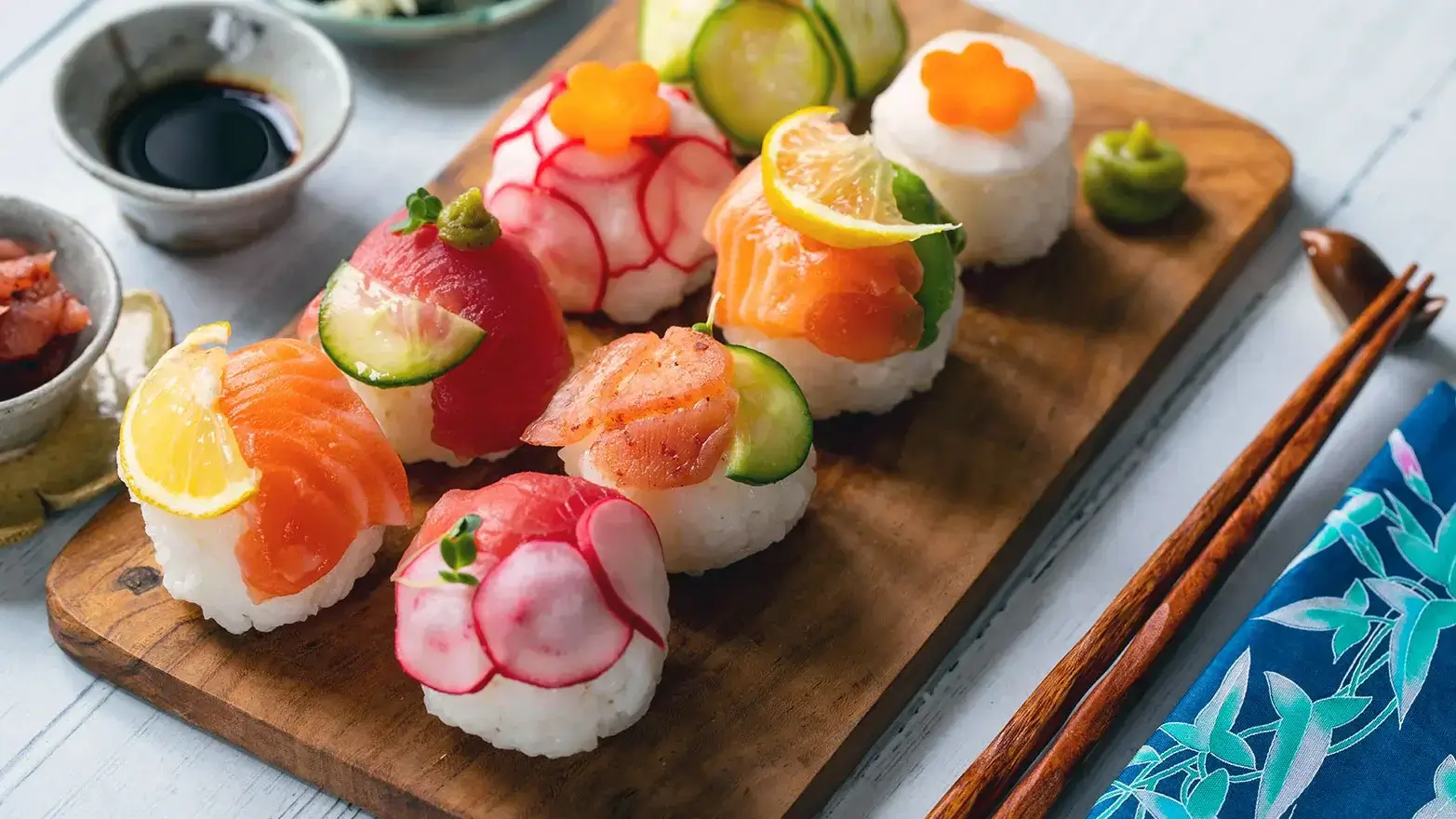
Category: hand-pressed
Temari, sometimes called hand balls, are a unique sushi type meant to be eaten — you guessed it — with your hands. Similar to nigiri, these handcrafted sushi balls are made by pressing small portions of vinegared rice into palm-sized rounds and topping them with raw seafood and vegetables. This dish is simple to prepare at home and goes well with a variety of sushi toppings such as shrimp, sashimi or tobiko (fish eggs).
Temari sushi is a good option for those who enjoy bite-sized, handcrafted sushi with a focus on presentation.
5. Inari
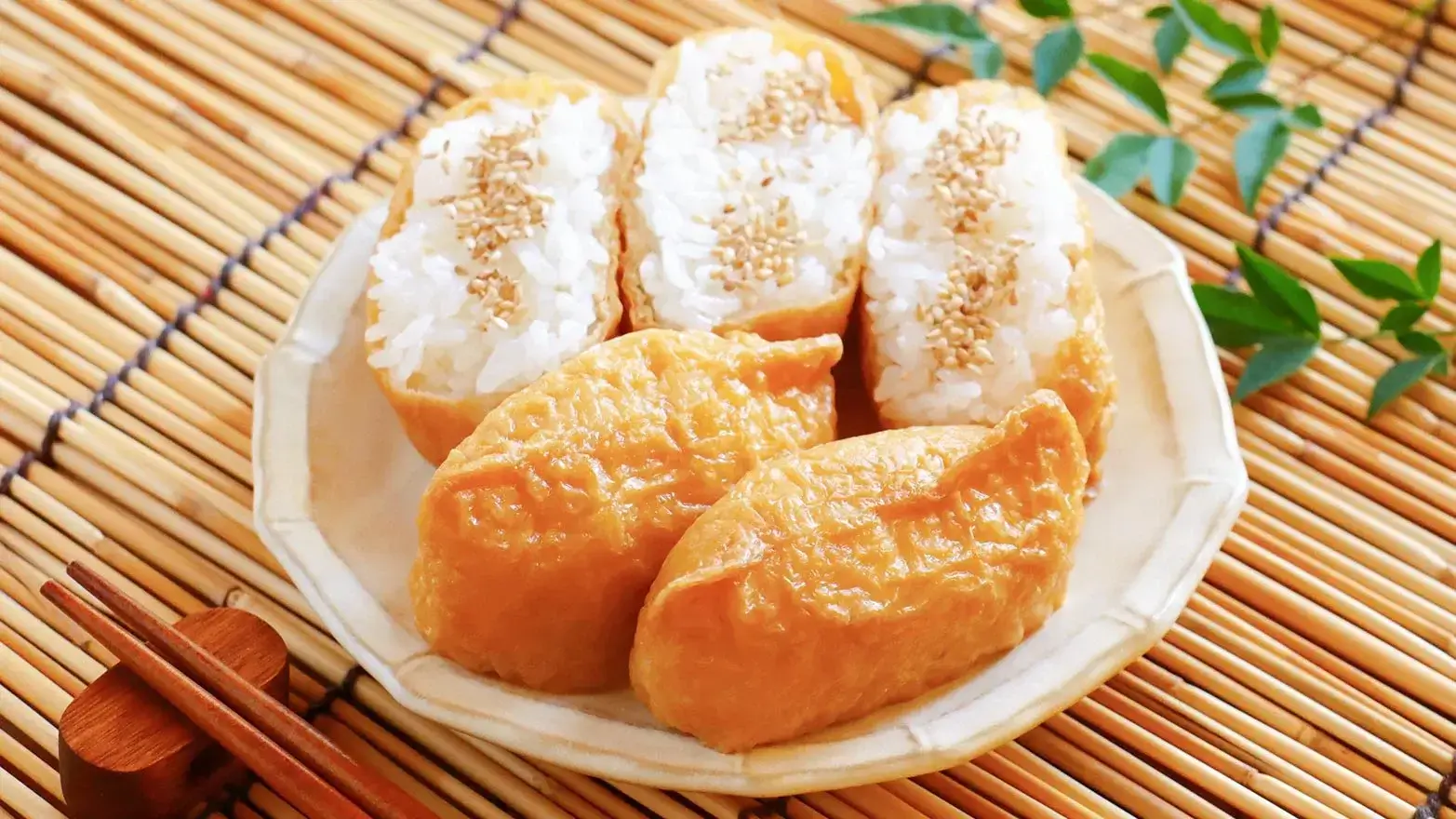
Category: hand-pressed
Inari puts a unique spin on traditional sushi by tucking ingredients into a fried tofu pouch marinated in a sweet sauce. When ordering or making inari, these bite-sized pieces are to be neatly prepped, showcasing the sushi chef’s detail in folding each pouch. Inari sushi is ideal for those who enjoy a sweet and savory combination.
6. Maki (makizushi)
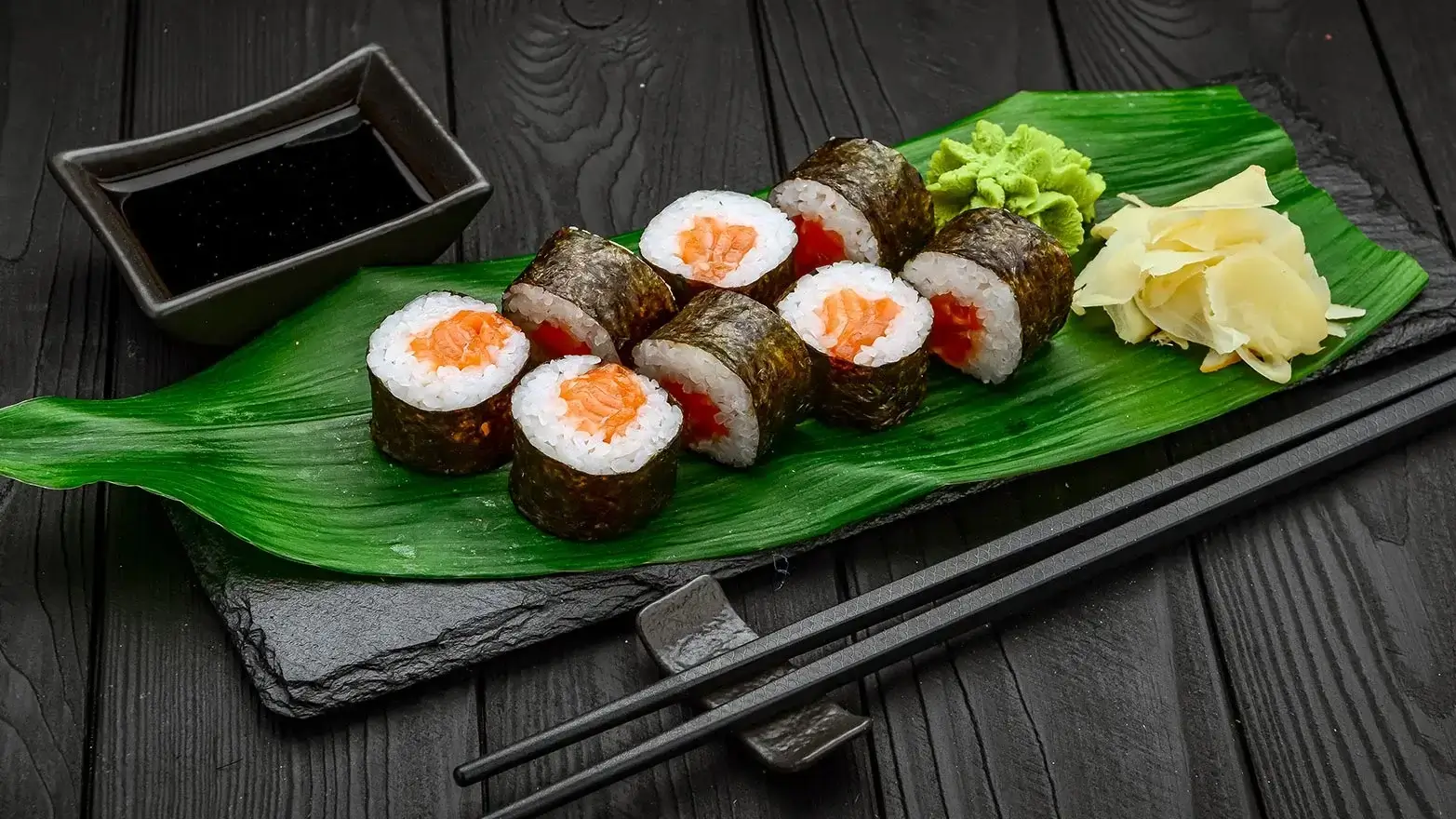
Category: hand-rolled
In Japanese, the word “maki” means “roll.” Maki stands out as one of the most traditional and cherished types of sushi, regularly served as sliced rolls. This culinary delight has become a beloved art form, offering many sushi variations from bento box lunches to ingredients like raw, tempura and more to cater to different preferences.
Maki is a blend of vinegared sushi rice, fresh seafood and veggies layered on a nori sheet (seaweed). The magic happens when this combination is skillfully rolled into a tube and sliced into bite-sized pieces. Unlike hand-pressed sushi like nigiri, maki involves a precise rolling technique to create the perfect roll.
Popular types of maki include:
- Hosomaki: thin rolls made with rice, seaweed and one kind of filling
- Kappa maki: rolls made with seaweed, rice and cucumber
- Tekka maki: rolls made with seaweed, rice and tuna
- Futomaki: large rolls made with seasoned rice and a variety of seafood fillings
If you’re looking for an easy, delicious meal, maki rolls are a great option. They come in a variety of flavors and combinations, often with familiar ingredients like avocado, cucumber and cooked seafood. You can make your own maki or buy prepared sushi rolls from your favorite grocery store.
7. Uramaki (uramakizushi)
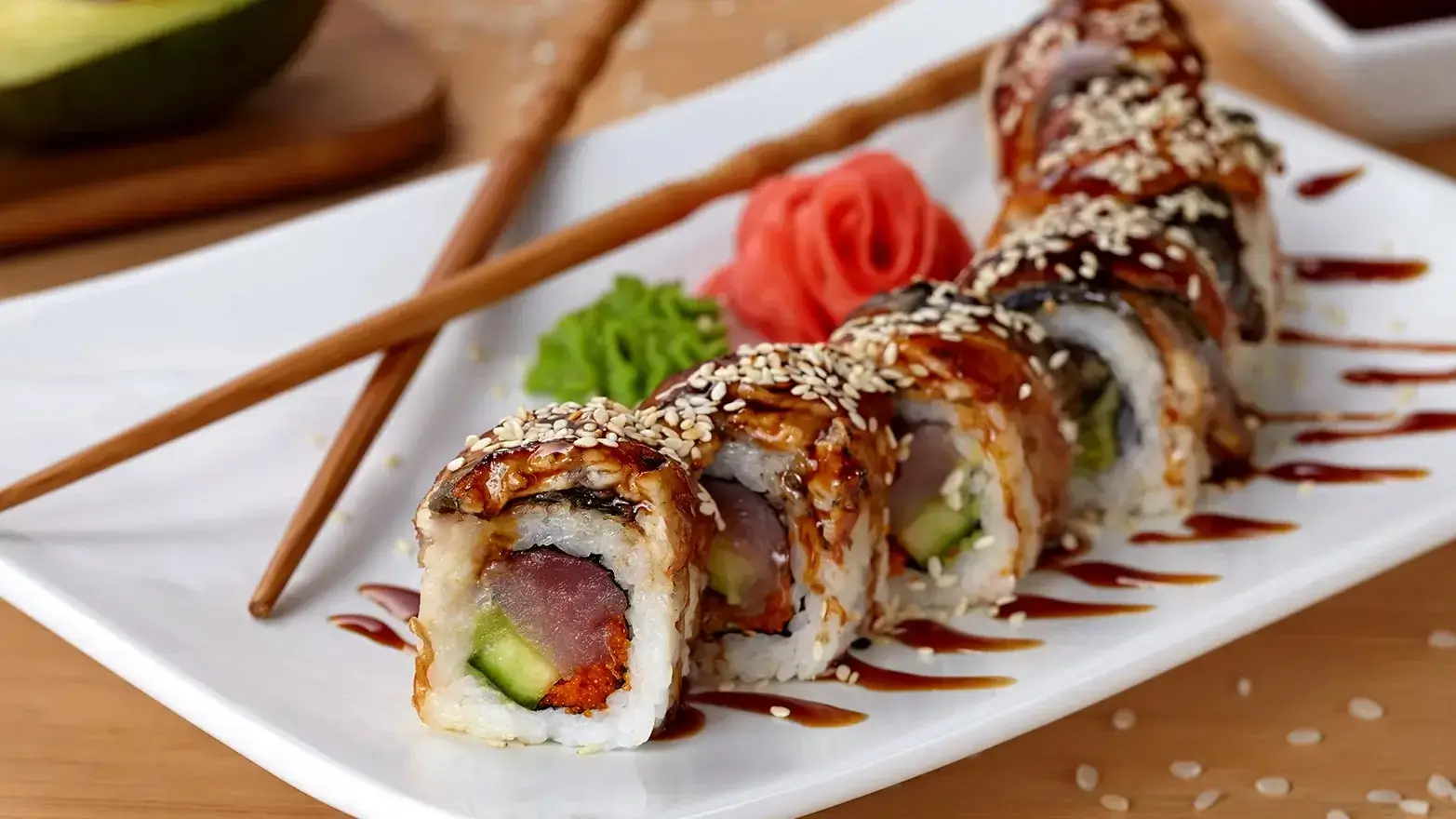
Category: hand-rolled
Uramaki sushi, also known as “inside-out” rolls, features seaweed-wrapped sushi with rice on the outside and rolled with a bamboo mat to prevent the rice from sticking. Unlike traditional maki, uramaki contains more seafood fillings, veggies, sauces, tempura-fried flakes and other toppings for presentation.
Popular types of uramaki sushi rolls include:
- California roll: contains crab, avocado, cucumber and seaweed garnished with sesame seeds
- Rainbow roll: contains raw seafood, cucumber, avocado and crab
- Spicy tuna roll: contains a blend of tuna, cucumber, avocado and spicy mayo for an extra kick
- Dragon roll: contains eel as the main ingredient and garnished with avocado slices to mimic dragon scales
- Spider roll: contains tempura-fried crab, cucumber and avocado, topped with mango and eel sauce
- Tempura roll: contains tempura-fried shrimp, avocado and cucumber
- Vegetable roll: contains cucumber, carrots, micro greens, avocado, asparagus and cream cheese
Try uramaki if you’re looking for a fresh take on sushi with rice on the outside. It offers creative combinations, perfect for those who appreciate diverse textures in a single bite.
Grab it now on Instacart:
8. Temaki (temakizushi)
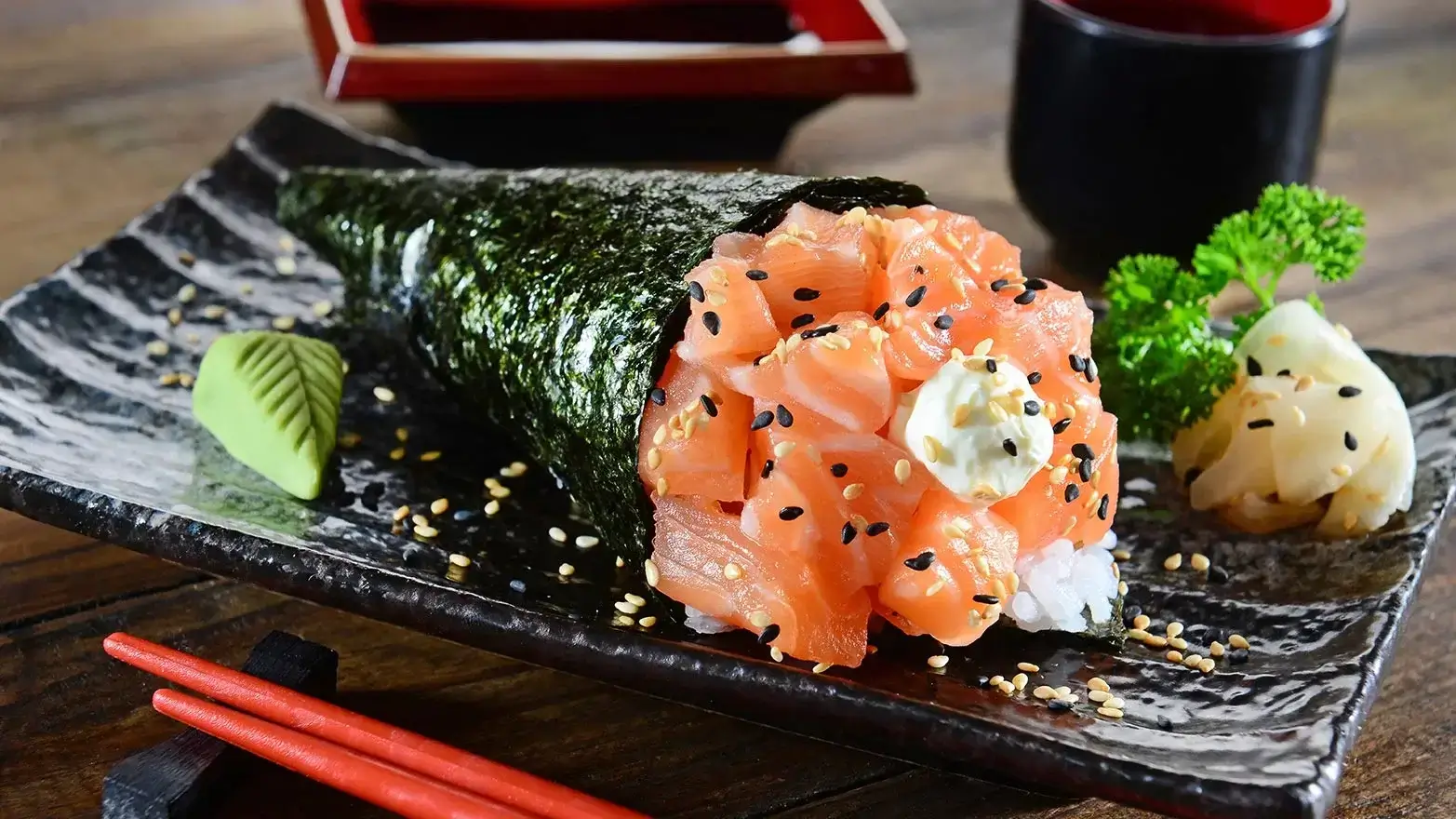
Category: hand-rolled
Temaki, also known as a hand roll or temakizushi, is a unique type of sushi with a distinct cone shape. Unlike traditional sushi rolled with bamboo mats, temaki is handcrafted into a cone using a seaweed wrap filled with vegetables, fish and sometimes rice. It offers a straightforward way to enjoy sushi since it can be eaten by hand, eliminating the need for chopsticks. Temaki’s simplicity provides a hands-on, personalized dining experience, with each hand roll tailored to individual preferences.
Maki vs. temaki
The difference between maki and temaki is the shape and preparation. Maki sushi is rolled into a circular tube using a bamboo mat and sliced into bite-sized pieces, while temaki is hand-rolled into a cone shape and eaten as one piece.
9. Chirashi (chirashizushi)
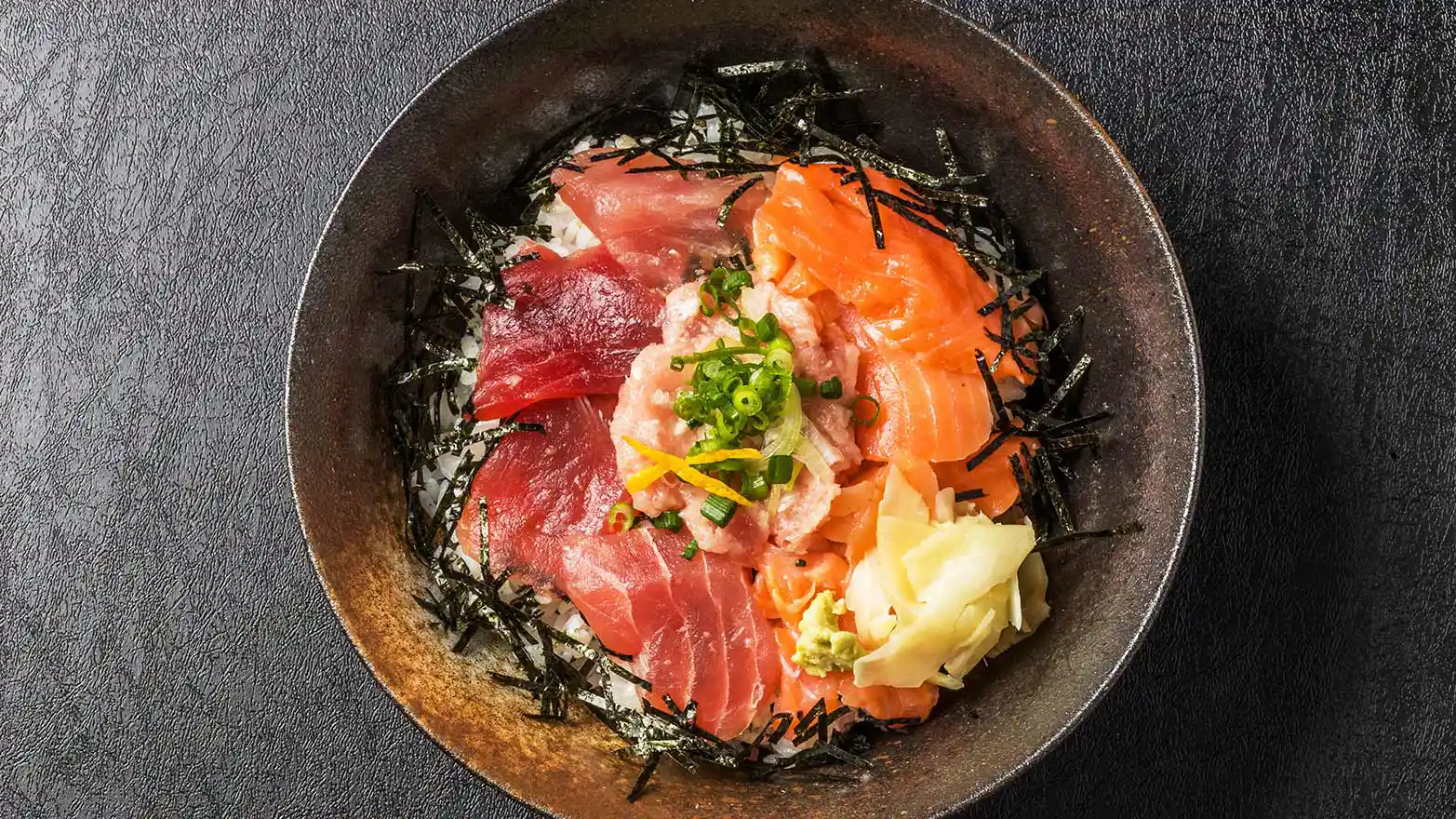
Category: sushi bowl
Chirashi is a unique type of sushi because it’s served in a bowl rather than hand-cut or rolled. This dish is well known for its medley of flavors and textures, which includes vinegared rice layered with sashimi-grade seafood, vegetables and complementary ingredients in an artistic arrangement.
Chirashi is fun to make at home because you can treat it like a blank canvas and get creative by combining different sushi elements into a personalized design. Chirashi celebrates fresh, high-quality ingredients and is popular among sushi fans who appreciate its visual appeal.
Grab it now on Instacart:
Types of fish in sushi
One of sushi’s biggest appeals is the variety of seafood that can be used. Each type of fish brings a unique character to sushi, from the rich, buttery taste of salmon (sake) to the tender sweetness of eel (unagi). Here is a list of the types of fish available in sushi.
- Ahi (yellowfin tuna) is popular for its firm texture and mild flavor.
- Ebi (shrimp) offers a sweet and light taste.
- Hamachi (yellowtail) boasts a buttery texture and a mild, clean taste.
- Ika (squid) has a tender, slightly chewy texture with a subtle sweetness.
- Maguro (bluefin tuna) delivers a mild taste and a tender texture.
- Sake (salmon) is known for its rich, fatty texture and distinct orange color.
- Unagi (freshwater eel) features a savory-sweet flavor and chewy texture.
- Saba (mackerel) offers a bold, briny flavor with a tender yet firm texture.
- Tako (octopus) delivers a chewy texture and a mild, slightly sweet taste.
- Hirame (flounder) is known for its delicate, sweet flavor and firm texture.
- Hotate (scallop) has a creamy texture and delicate flavor.
- Uni (sea urchin) is celebrated for its custard-like texture and complex, salty flavor.
Order sushi like a pro with Instacart
Now that you’ve learned about the different types of sushi, you can order seafood like a pro. Thanks to the Instacart app, you can easily find all your essentials online, from crisp seaweed sheets to the freshest ingredients for crafting poke bowls. Don’t let a busy lifestyle ruin your dinner plans. Place your online order today and enjoy fresh, flavorful food delivered straight to your door.
Most Recent in Grocery Guides

Grocery Guides
15 Tasty Ice Cream Alternatives: Yogurt, Shaved Ice & More
Ice cream has been a beloved treat for generations. With its rich flavors and smooth texture, it’s no wonder people choose ice cream when looking for dessert. However, as dietary restrictions and health consciousness evolve,…...
Apr 10, 2024![When Is Artichoke Season? [Recipes + Guide]](https://www.instacart.com/company/wp-content/uploads/2024/03/when-is-artichoke-season-hero-447x224.webp)
Grocery Guides
When Is Artichoke Season? [Recipes + Guide]
Quick Answer When is artichoke season? In North America, artichoke season is from March to May, with smaller batches in October. Artichokes are a unique and versatile vegetable known for its tender heart and delicate…...
Mar 6, 2024
Grocery Guides
Brown Eggs vs. White Eggs: How Are They Different?
Eggs are an essential ingredient in many sweet and savory recipes. The possibilities are endless when it comes to using these protein-packed powerhouses — you can scramble, fry, boil or poach eggs, or you can…...
Feb 24, 2024



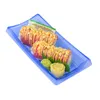



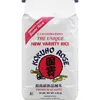
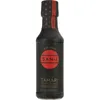
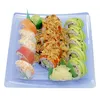
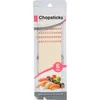





 Squash – All You Need to Know | Instacart Guide to Fresh Produce
Squash – All You Need to Know | Instacart Guide to Fresh Produce  Ghost Pepper – All You Need to Know | Instacart Guide to Fresh Produce
Ghost Pepper – All You Need to Know | Instacart Guide to Fresh Produce  Sprouts – All You Need to Know | Instacart Guide to Fresh Produce
Sprouts – All You Need to Know | Instacart Guide to Fresh Produce 

